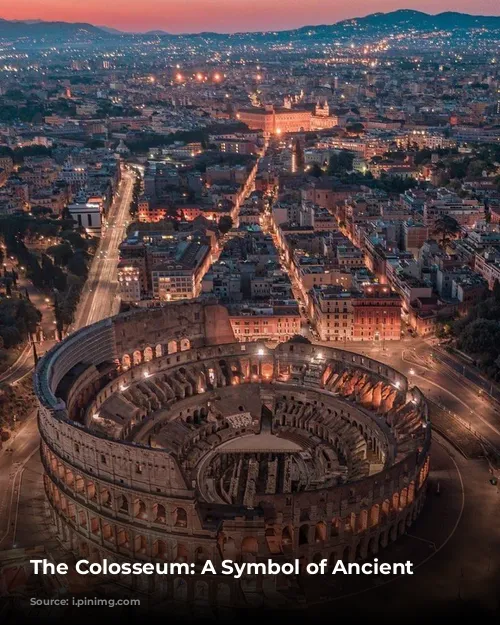The Colosseum, an impressive structure that stands as a testament to human ingenuity, has witnessed the rise and fall of empires and the intricate history of Europe. It’s a time capsule, a living relic of ancient Rome. Let’s dive into the fascinating world of this iconic monument.
The Colosseum: What is it?
The Colosseum, originally known as the Flavian Amphitheater, is a grand oval-shaped building in the heart of Rome, Italy. It was built by the Flavian emperors, who aimed to showcase their power and dominion. This awe-inspiring structure measures a staggering 189 meters in length and 156 meters in width, with a capacity of over 50,000 spectators. It remains the largest amphitheater ever constructed, a striking symbol of ancient Rome’s might and grandeur.
The Colosseum: How was it built?
Construction began under Emperor Vespasian in 70 AD and was completed by his son, Titus, in 80 AD. The Colosseum’s construction, a remarkable feat of engineering, utilized an estimated 100,000 cubic meters of travertine stone for its outer walls alone. Skilled Roman builders used an innovative system of pulleys, cranes, and other tools to transport and assemble these massive stones, resulting in a structure that has stood the test of time. Despite earthquakes, fires, and other disasters, the Colosseum remains largely intact and is 100% safe for visitors.
The Colosseum: Why is it so important?
The Colosseum holds significant historical importance, not just for its use in hosting spectacular events and entertainment, but also for the architectural innovations it introduced. This iconic structure was among the earliest examples of using concrete in construction. Its ingenious design, incorporating a complex system of tunnels and passageways, continues to inspire architects and engineers.
Beyond its architectural significance, the Colosseum serves as a reminder of the incredible cultural and artistic achievements of ancient Rome and the darker aspects of its history, such as the brutal spectacles that took place within its walls.
The Colosseum: What was it used for?
Among the most famous and exciting spectacles held in the Colosseum were the gladiatorial combats. These brutal and bloody contests pitted highly trained warriors, known as gladiators, against each other in fierce battles to the death. Gladiatorial games were a vital part of ancient Roman culture, serving as both public entertainment and a means of reinforcing social hierarchy. Victors earned fame, fortune, and the admiration of the Roman spectators.
Another popular form of entertainment in the Colosseum was wild animal hunts, known as “venationes”. These events showcased the skill and prowess of trained hunters, who faced off against exotic wild animals brought from all corners of the empire. Lions, elephants, and even wild bears were released into the arena, where they engaged in deadly battles with the brave hunters. These spectacles allowed the Romans to demonstrate their mastery over nature and flaunt the vast reach and wealth of their empire.
The Colosseum also served as a stage for elaborate reenactments of famous battles and historical events. These performances, meticulously staged with intricate sets and costumes, often involved thousands of participants. In addition to these dramatic recreations, the Colosseum was occasionally filled with water to stage mock naval battles, known as “naumachia.” These events showcased Rome’s naval prowess and offered another thrilling form of entertainment for the masses.
The Colosseum: How to visit it?
If this glimpse of history has piqued your interest, why not visit the Colosseum yourself and explore its historic site? A tour of the Colosseum is sure to be an unforgettable experience, allowing you to immerse yourself in the rich history and captivating stories surrounding this ancient wonder. However, a guided tour led by knowledgeable and enthusiastic experts, who can offer invaluable insights into the architecture, history, and cultural significance of the Colosseum, is essential. At What a Life Tours, we offer some of the best Colosseum tours in the capital, where we’ll show you ancient tunnels beneath the Colosseum itself, and other areas closed off to the general public. We offer intimate, private tours (up to 6 people) and even nighttime tours, which offer a unique and enchanting perspective of the Colosseum under the stars! No matter which option you choose, a tour of the Colosseum is a must-see for any traveler to Rome.
